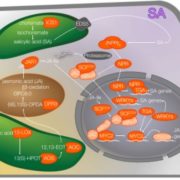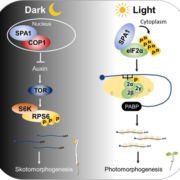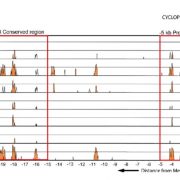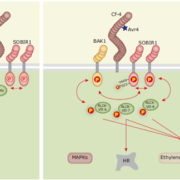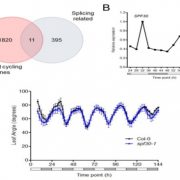Crosstalk between PTGS and TGS pathways in natural antiviral immunity and disease recovery (Nature Plants)
 Viruses are significant pathogens of plants, and we know that plants defend themselves in part through the production of small RNAs (sRNAs) that suppress the virus. The viral pathogens in turn can produce viral supressors of RNA silencing (VSR). Kørner et al. investigated the role of gene silencing (post-trancriptional PTGS and transcriptional TGS) in the recovery of Arabidopsis plants from infection by oilseed rape mosaic virus (ORMV). They took advantage of Arabidopsis mutants blocked in various aspects of gene silencing, and examined viral RNA as well as host and viral-derived sRNAs. Although leaves produced later after infection carry the virus, they remain asymptomatic. The authors suggest a model in which “recovery reflects the establishment of a tolerant state in infected tissues and occurs following robust delivery of antiviral secondary siRNAs from source to sink tissues, and establishment of a dosage able to block the VSR activity involved in the formation of disease symptoms.” (Summary by Mary Williams) Nature Plants 10.1038/s41477-018-0117-x
Viruses are significant pathogens of plants, and we know that plants defend themselves in part through the production of small RNAs (sRNAs) that suppress the virus. The viral pathogens in turn can produce viral supressors of RNA silencing (VSR). Kørner et al. investigated the role of gene silencing (post-trancriptional PTGS and transcriptional TGS) in the recovery of Arabidopsis plants from infection by oilseed rape mosaic virus (ORMV). They took advantage of Arabidopsis mutants blocked in various aspects of gene silencing, and examined viral RNA as well as host and viral-derived sRNAs. Although leaves produced later after infection carry the virus, they remain asymptomatic. The authors suggest a model in which “recovery reflects the establishment of a tolerant state in infected tissues and occurs following robust delivery of antiviral secondary siRNAs from source to sink tissues, and establishment of a dosage able to block the VSR activity involved in the formation of disease symptoms.” (Summary by Mary Williams) Nature Plants 10.1038/s41477-018-0117-x


